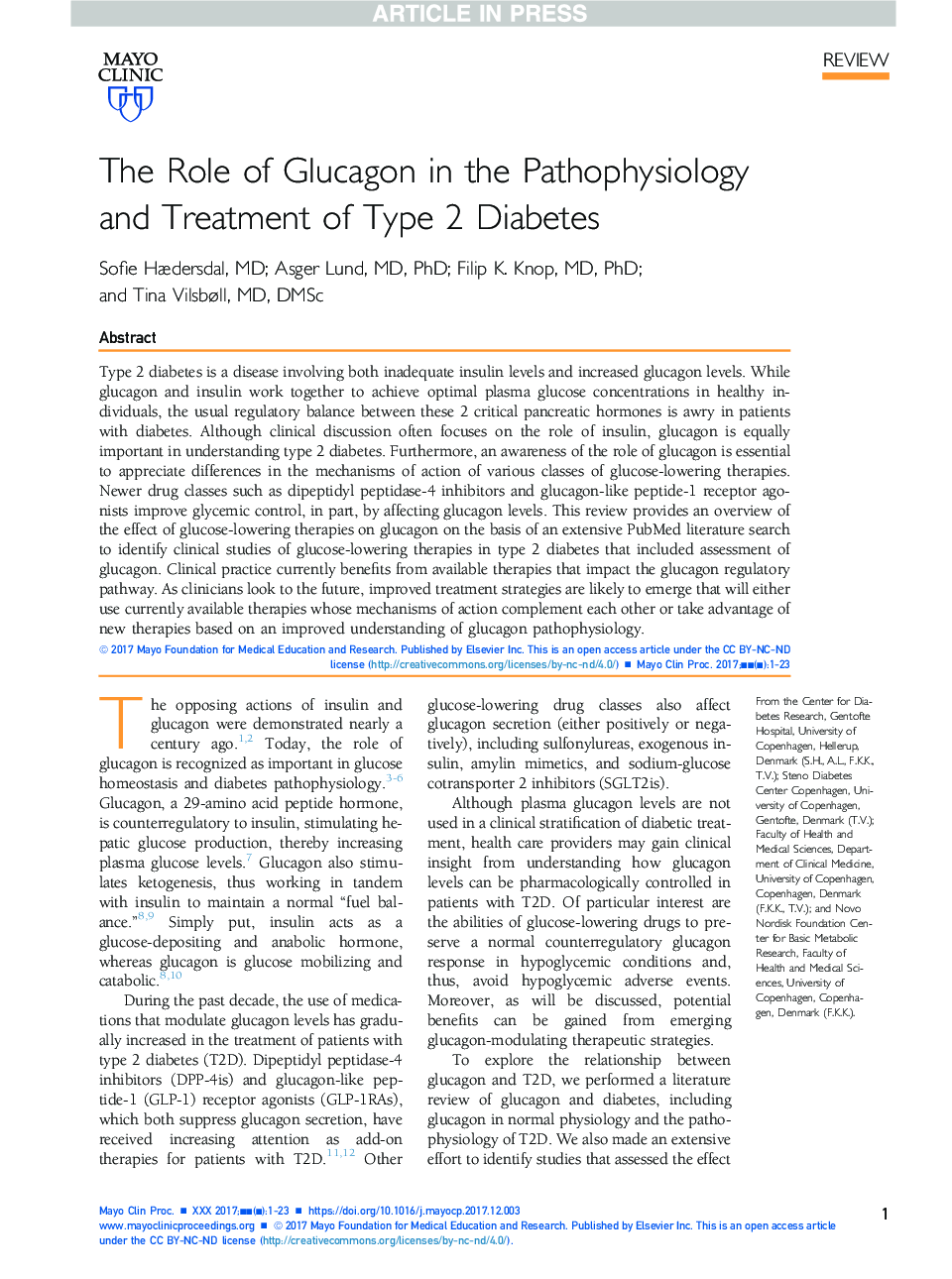| کد مقاله | کد نشریه | سال انتشار | مقاله انگلیسی | نسخه تمام متن |
|---|---|---|---|---|
| 8673341 | 1578839 | 2018 | 23 صفحه PDF | دانلود رایگان |
عنوان انگلیسی مقاله ISI
The Role of Glucagon in the Pathophysiology and Treatment of Type 2 Diabetes
ترجمه فارسی عنوان
نقش گلوکاگون در پاتوفیزیولوژی و درمان دیابت نوع 2
دانلود مقاله + سفارش ترجمه
دانلود مقاله ISI انگلیسی
رایگان برای ایرانیان
کلمات کلیدی
GLP-1T2DGLP-1RAA1cDPP-4iSGLT2iglucagon-like peptide-1 receptor agonist - آگونیست گیرنده پپتیدی 1 مانند گلوکاگونType 2 diabetes - دیابت نوع 2Sodium-glucose cotransporter 2 inhibitor - سدیم گلوکز کاتترنبرگ 2 مهار کنندهDipeptidyl peptidase-4 inhibitor - مهارکننده Dipeptidyl peptidase-4Glycated hemoglobin - هموگلوبین گلیکوزیلهglucagon-like peptide-1 - پپتید 1-گلوکاگون-مانند
موضوعات مرتبط
علوم پزشکی و سلامت
پزشکی و دندانپزشکی
کاردیولوژی و پزشکی قلب و عروق
چکیده انگلیسی
Type 2 diabetes is a disease involving both inadequate insulin levels and increased glucagon levels. While glucagon and insulin work together to achieve optimal plasma glucose concentrations in healthy individuals, the usual regulatory balance between these 2 critical pancreatic hormones is awry in patients with diabetes. Although clinical discussion often focuses on the role of insulin, glucagon is equally important in understanding type 2 diabetes. Furthermore, an awareness of the role of glucagon is essential to appreciate differences in the mechanisms of action of various classes of glucose-lowering therapies. Newer drug classes such as dipeptidyl peptidase-4 inhibitors and glucagon-like peptide-1 receptor agonists improve glycemic control, in part, by affecting glucagon levels. This review provides an overview of the effect of glucose-lowering therapies on glucagon on the basis of an extensive PubMed literature search to identify clinical studies of glucose-lowering therapies in type 2 diabetes that included assessment of glucagon. Clinical practice currently benefits from available therapies that impact the glucagon regulatory pathway. As clinicians look to the future, improved treatment strategies are likely to emerge that will either use currently available therapies whose mechanisms of action complement each other or take advantage of new therapies based on an improved understanding of glucagon pathophysiology.
ناشر
Database: Elsevier - ScienceDirect (ساینس دایرکت)
Journal: Mayo Clinic Proceedings - Volume 93, Issue 2, February 2018, Pages 217-239
Journal: Mayo Clinic Proceedings - Volume 93, Issue 2, February 2018, Pages 217-239
نویسندگان
Sofie MD, Asger MD, PhD, Filip K. MD, PhD, Tina MD, DMSc,
